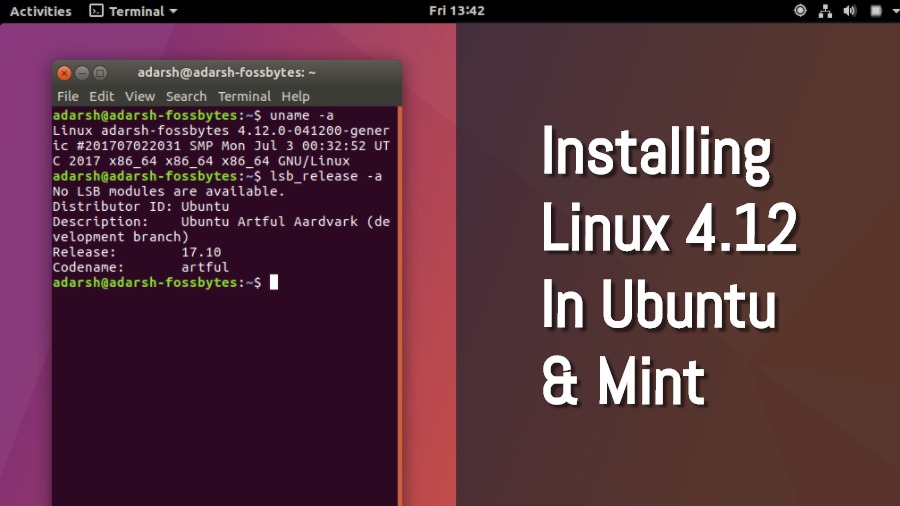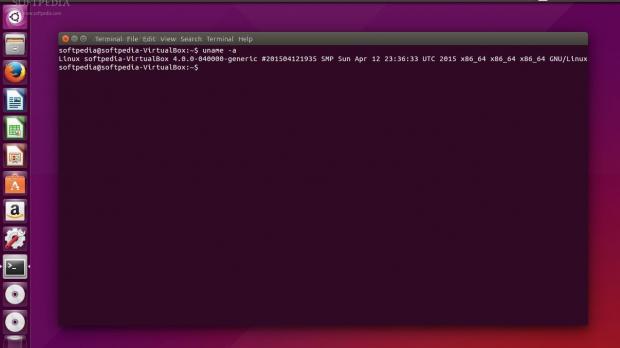

- Linux kernel 4.4 install#
- Linux kernel 4.4 software#
- Linux kernel 4.4 free#
- Linux kernel 4.4 windows#
Linux kernel 4.4 install#
When migrating, you can use this file to install the packages on another system.

The app will make a file containing a list of packages installed by the user on one system. The popular makers' Raspberry Pi system also has better graphics. Distributor ID: Ubuntu Description: Ubuntu 16.04.2 LTS Release: 16.04 Codename: xenial.

I tested this method on the following version of Ubuntu: lsbrelease -a No LSB modules are available. Nala is the backend for MX-Updater, PipeWire/WirePlumber for handling the audio and video across the system.Ī new application, “User Installed Packages” is available on both MX-21 and MX-23. The Linux kernel 4.4 also offers better support for ARM's 64-bit processors and Qualcomm's high-bandwidth capable Snapdragon 820. Method 1: Search and install the latest stable version.
Linux kernel 4.4 software#
MX Linux 23 features an updated software suite that consists of the following: Whereas, in the case of KDE Plasma, MX Linux 23 comes equipped with Plasma 5.27, featuring a new welcome app, improved Discover, Flatpak permissions, better multi-monitor support, and more.Īnd the next variant includes Fluxbox 1.3.7with many new configuration options and a special 'appfinder' config for rofi that replaces 'xfce4-appfinder'. MX Linux 23 comes equipped with XFCE 4.18 that features file manager improvements, desktop/panel changes, new wallpapers and more. These were also updated with this release let me take you through them: MX Linux features three different flavors that feature XFCE, KDE Plasma, and Fluxbox. This site is operated by the Linux Kernel Organization, Inc., a 501(c)3 nonprofit corporation, with support from the following sponsors. Then there are the various GUI tweaks, a debconf value for making legacy grub-pc updates simpler, fixes for the grub bootloader install, and more.ĭesktop Environment Upgrades The Neofetch output on MX Linux 23

The installer now has support for 'swapfiles', as well as swap partitions, the 'regular' installation mode automatically defaults to swapfiles. It also features many improvements some of the highlights include the following: having backported support for X86-64 and AArch64 to the 4.4, 4.9, and 4.14 branches of the stable kernel tree.
Linux kernel 4.4 free#
🆕 MX Linux 23: What's New? MX Linux 23 with Fluxboxīased on the latest Debian 12 'Bookworm', MX Linux 23 features the long-term supported Linux Kernel 6.1 LTS as its foundation.Īnd Linux Kernel 6.4 for its AHS edition meant for newer hardware. The version of the Linux kernel supplied by default in SUSE and openSUSE 10.2, Ubuntu 6.10 (all. The Linux kernel is a free and open-source. It is the latest stable FFmpeg release from the 4.4 release branch, which was cut from. Let's look at all the refinements with MX Linux 23, codenamed Libretto. 32-bit and 64-bit for kernel 3.2.0 and above. Luckily, a new release has been introduced that promises quite a few improvements. Install Armbian to internal or external memory, a desktop, 3rd party software. The last major release was MX Linux 21, which was a long time ago. Manage OpenSSHD settings, freeze kernel upgrades, toggle hardware settings. Not to forget, MX Linux is also a systemd-free distro. I say "should" because Ubuntu 22.04 has some significant issues under WSL1, specifically the unzip command doesn't work.MX Linux is a Debian-based distro that focuses on providing an elegant and efficient desktop experience. If you want to, you can back it up first with: wsl -export Ubuntu-22.04 Ubuntu2204_backup.tar You can (and should) convert the distribution by exiting the distribution, then from PowerShell: wsl -set-version Ubuntu-22.04 2 Changing the default version to 2 doesn't actually change the already-installed distribution. It's quite common for a distribution to be installed before WSL2 was installed or set as default.
Linux kernel 4.4 windows#
The Windows build number (19041 in your case).When running uname -a under WSL1, the pseudo-kernel will report as: While WSL2 is the default for new distributions that you install, it appears that your Ubuntu distribution was originally installed as WSL1.


 0 kommentar(er)
0 kommentar(er)
